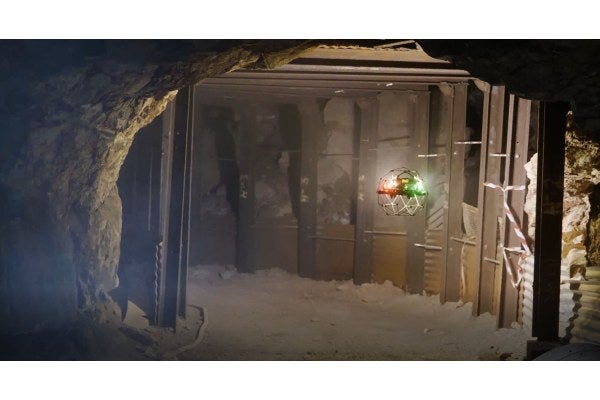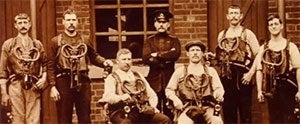Our roots are firmly in the UK coal fields where we began our journey in 1902 as the Mines Rescue Service. Our long history in responding to emergencies in the UK mining industry underpins our confined space and working at height services today.
Our structure retains the governance and expertise to operate a national mines rescue scheme and helps us manage and maintain a technical rescue service that covers a range of industrial sectors.
During those 120+ years, we have seen many changes to technology and recognise the need to adapt and innovate while never letting go of our goals and values. So, we have investigated new approaches and introduced new technologies – with the latest being our internal inspection drones.
Drones in mining
Although coal mining is very much diminished in the UK, mining itself is a resurgent industry. Mining for rock salt, gypsum, gold, potash, barite, sand, fertiliser, flurospar and Bath stone are all examples of underground mining taking place in the UK today.
Drones are a great new technology that enable areas underground to be surveyed without the need for anyone to enter the space. Before a drone is used underground, a full risk assessment and method statement must be conducted to ensure the area to be surveyed is free from potentially flammable atmospheres as the drone is not ATEX rated.
Approach to drone inspections in underground mines
Let’s look at a few different areas within a mine that could be inspected by an internal inspection drone:
Abandoned tunnels and roadways
Very often, in an operational mine, areas may have been historically abandoned – due to exhaustion of reserves, poor geological conditions or poor yield, for example. However, if the market changes, mine operators may decide they wish to revisit these areas to see if mining them has become feasible.
A drone offers an ideal option here as it can be used to check the stability and safety of the area before an initial inspection is then conducted on foot.
Falls of ground
During normal mining operations, they may have been occasions when there has been fall of ground – part of the roof collapses – and people have had to retreat.
A drone can be used to check the collapse and roof conditions, see how stable it is and how safe.
Examining surface ventilation shafts
As mines go deeper and further, ventilation is restricted so surface fans are installed to ease ventilation for workers. So long as the depth of the shaft is within the capability of the drone’s signal strength and battery life, drones can be used to examine surface ventilation shafts. MRS Training & Rescue has used the internal inspection drone to inspect gypsum shafts that are approximately 60m deep. Checking for integrity of the brickwork, concrete, services and general construction of the shaft.
Inspection at height
Many underground mines are vast and can have cranes running overhead that need inspecting. In some mines, once an area has been mined, operators put in concrete floors and add racking to store important documents due to the dry atmosphere in the mine. This high-rise racking can also be inspected by drones eliminating working at height and associated hazards.
Tourist mines
Internal inspection drones can be used to inspect a mine as part of a feasibility study to determine if the mine is in good condition and suitable for opening to the public as a visitor attraction.
General operational surveys
An internal inspection drone can be used in any area of a mine that is in operation, as a regular safety check of the condition of the area, strata and roadways, ensuring the safety of those working in it. Following the inspection, a written report and accompanying video footage can be provided.
Search and rescue
In the event of a mining incident, the drone could be deployed for search and rescue as it has an infrared camera with thermal imaging capability – although this is dependent on the environment due to the drone’s signal strength and battery life.




